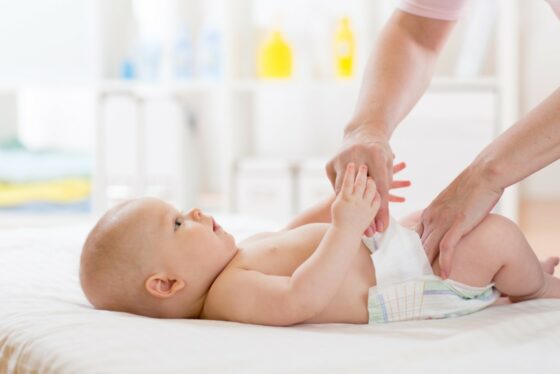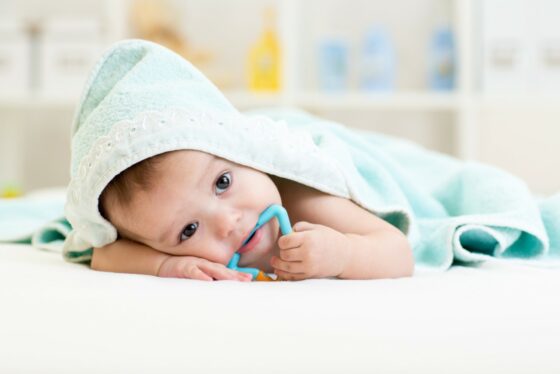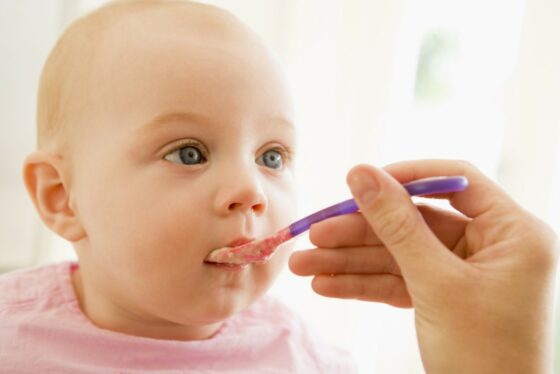Dealing With Baby Constipation & Diarrhoea
Learn how to recognise the signs of constipation and diarrhoea and what you can do to help make your baby more comfortable.
When it comes to bowel movements in exclusively breastfed babies, there is no normal. Colour, frequency and consistency can vary widely from baby to baby. But it is important to learn what’s normal for your little one so you can recognise signs of constipation or diarrhoea.
Typically, in the first few days of life, your baby may only have one or two soiled nappies. The thick, tar-like substance they pass is called meconium. After three or four days, when your milk comes in, his stools will become more frequent – often four or more per day – and they are often a seedy yellow or green colour.
After six weeks, some babies may have as many as five bowel movements a day, while others may have one bowel movement every few days. As long as his abdomen is soft and he is not expressing any discomfort, there is nothing to worry about.
If your baby has diarrhoea
Breastfed children generally have soft and loose stools normally, which parents often confuse for diarrhoea. It’s when they have more bowel movements than usual, multiple stools per feeding or very watery stools that they may have diarrhoea.
Usually, diarrhoea doesn’t last long and will resolve itself. However, it’s important to monitor it as dehydration can occur as a result. Watch for signs such as dry eyes or mouth, infrequent urination, irritability or lethargy. Check the skin turgor by pinching the skin over the back of the hand, on the abdomen, or over the front of the chest under the collarbone. Mild dehydration will cause the skin to be slightly slow in its return to normal. Feed frequently to help with hydration.
If your baby has constipation
Constipation is extremely rare in healthy exclusively breastfed infants. During a normal bowel movement, your little one’s face may turn red, or they may grunt or make other noises. This doesn’t mean they are constipated. Rather, your baby may have constipation if his bowel movements are small, hard and dry.
The introduction of solid foods is one of the most common triggers of constipation in children. The digestive system needs time to adapt to new foods. Some babies become constipated when iron supplements are introduced.
Things to remember
If your baby is showing signs of constipation or diarrhoea, here are some things to remember:
- Keep them hydrated
If you are exclusively breastfeeding, then offer more feeds. Or, if your baby has started solids then offer fluids like water or clear broth.
- Monitor your own diet
Sometimes, babies react to something in your breast milk. You may start to see patterns after you eat certain foods.
- Inform your doctor if it persist
If diarrhoea and dehydration persists, occurs in a baby under 3 months of age, or occurs in the presence of blood, mucus, pus or continuous vomiting, contact your child’s doctor straight away.
Likewise, if your child is experiencing persistent constipation for two weeks or constipation accompanied by fever, vomiting, blood in their stool, swollen abdomen or weight loss, you should contact your child’s doctor.
- Avoid adult treatments
Follow your doctor’s instructions for treatment – don’t use treatments that are used to resolve adult conditions.
- If eating solids, increase the amount of fibre in their diet
To help with constipation, give your baby extra fibre in their diet. Fruits, vegetables, beans and whole grains can help.

Want to know more? Call us on 1800 842 098 or Live Chat now.
Track your baby’s development
Get month-by-month advice on your baby’s development



